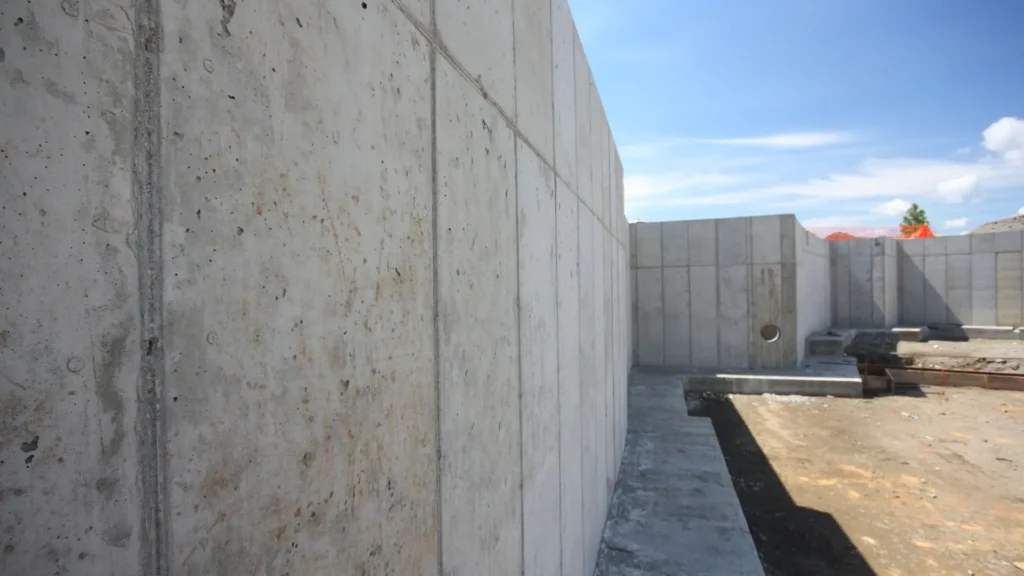Welcome to your ultimate guide on building a reliable, long-lasting retaining wall in Rotorua—where unique volcanic soil, sloped terrain, and ever-changing weather make material choice more important than ever. Whether you’re tackling a DIY landscaping project or planning to bring in a professional, knowing which materials to use can make or break your wall’s durability, drainage, and visual appeal. In this post, we’ll walk you through everything you need to know about the essential materials required for retaining walls in Rotorua, why local conditions matter, where to source supplies, and tips to ensure your wall stands strong for years to come.
To build a retaining wall in Rotorua, you’ll need core materials like treated timber, concrete blocks, natural stone, or poured concrete, chosen based on local soil and slope conditions. Support materials include gravel or crushed rock for drainage, geotextile fabric, drainage pipes (ag pipe), and reinforcement like rebar. For finishing, use sealants, capping stones, and weather-resistant coatings to protect the structure against Rotorua’s volcanic soil and weather.
Table of Contents
Why Rotorua’s Environment Matters When Building A Retaining Wall
Rotorua’s natural beauty and unique landscape make it a popular place for home improvement projects, especially outdoor features like retaining walls. However, what many homeowners may not realize is that Rotorua’s environment presents specific challenges that directly affect how a retaining wall should be planned, built, and maintained. From the soil beneath your feet to the weather above your head, every environmental factor plays a role in the long-term success and safety of your retaining wall.
- Rotorua’s Soil Type, Climate, and Seismic/Geothermal Conditions: Rotorua is located in one of New Zealand’s most geothermally active regions. The soil in this area tends to be a mix of volcanic ash, pumice, and clay, which means it can shift more easily compared to more stable soil types. Some areas have soft, sandy soil that drains quickly, while others may have dense, moisture-retaining layers that increase hydrostatic pressure behind walls. On top of this, Rotorua experiences frequent geothermal activity and occasional seismic movement, making it even more important to choose materials and building techniques that can tolerate movement, pressure changes, and temperature fluctuations.
- The Impact of Moisture, Erosion, and Slope on Structural Integrity: Moisture is one of the most significant environmental threats to retaining walls. In Rotorua, rainfall can be unpredictable, and when water is not properly managed, it can accumulate behind the wall. This creates pressure known as hydrostatic force, which weakens the wall over time and can lead to cracking, tilting, or even collapse. Additionally, Rotorua’s naturally sloped landscapes make many properties susceptible to erosion. If the wall is not built with the right foundational support and drainage systems, erosion can undermine its base, compromising stability and shortening its lifespan.
- Importance of Selecting Materials That Are Durable and Suited to Local Conditions: Not all retaining wall materials perform equally well under Rotorua’s conditions. For example, untreated timber may rot quickly in damp soil, while certain lightweight blocks may shift or crumble under pressure. That’s why it’s essential to select durable, weather-resistant materials like treated timber, natural stone, concrete blocks, or poured concrete that can handle high moisture levels and ground movement. Local conditions demand a thoughtful approach—choosing materials not only for their appearance but also for their strength, longevity, and compatibility with Rotorua’s environment.
In summary, building a retaining wall in Rotorua isn’t just about choosing a design or layout. It’s about understanding the land you’re building on and working with it, not against it. By taking Rotorua’s soil, weather, and geothermal features into account, you’ll create a retaining wall that doesn’t just look great but stands strong for years to come.
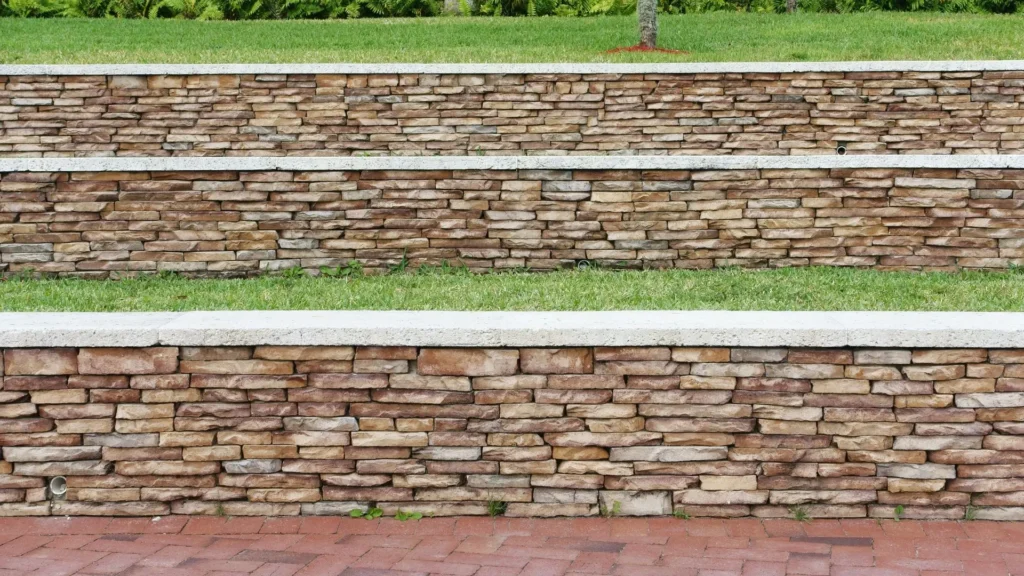
Key Materials Needed For A Retaining Wall
Building a retaining wall that can withstand Rotorua’s unique conditions—like sloped terrain, heavy rainfall, and volcanic soil—requires careful selection of high-quality materials. Choosing the right components ensures your wall will not only be structurally sound, but will also last for years with minimal maintenance. In this section, we’ll explore the three essential categories of materials you’ll need: core materials, support materials, and finishing materials. Each plays a vital role in your retaining wall’s strength, stability, and appearance.
Retaining Wall Core Materials
These materials form the main structure of your wall. The choice you make here will largely depend on your budget, the height and purpose of the wall, and your personal style preferences.
- Concrete blocks: These are among the most popular choices for retaining walls in Rotorua due to their versatility and strength. They’re easy to stack, come in various textures and finishes, and work well for both DIY and professional builds. Concrete blocks are particularly effective in resisting the lateral pressure of soil, making them ideal for taller walls or sloped sites.
- Treated timber: Timber retaining walls are a favourite among DIYers because they’re easy to handle and offer a more natural look. In New Zealand, H4 or H5 treated pine and macrocarpa are commonly used due to their resistance to moisture and decay. Timber is best suited for low to mid-height walls and adds a rustic charm to residential landscapes.
- Natural stone: Known for its timeless beauty and natural appeal, stone blends seamlessly with Rotorua’s surrounding environment. It’s more labour-intensive to work with and can be costlier, but the result is a stunning, durable wall with unique texture and colour. Ideal for decorative or high-end landscaping projects.
- Gabion baskets: These wire mesh cages filled with rocks or stones offer a modern, industrial look and excellent drainage capabilities. Gabion walls are strong, flexible, and can be stacked in creative ways. They also work well in areas where soil movement is a concern, thanks to their permeability and adaptability.
- Poured concrete: If you’re looking for maximum strength and a sleek finish, poured concrete is a top-tier option. It allows for custom shapes and heights, making it suitable for complex or large-scale retaining walls. This method does require formwork and professional installation but delivers unmatched durability and clean lines.
Essential Support Materials
Support materials are just as important as the core wall components. They ensure proper drainage, prevent structural failure, and improve long-term performance.
- Gravel or crushed rock: These are used at the base of the wall and behind it to support drainage and reduce soil pressure. Without this drainage layer, water can build up and push against the wall, eventually causing cracks or collapse. A compacted gravel base is critical for foundation stability.
- Drainage pipes (ag pipe): Installing a perforated drainage pipe at the bottom of the wall helps redirect water away from the structure. This prevents hydrostatic pressure, which is a leading cause of wall failure. Ag pipe is especially important in Rotorua’s wet climate.
- Geotextile fabric: This synthetic fabric is placed between the soil and gravel to stop fine particles from clogging the drainage layer. It allows water to flow through while keeping the layers of soil and gravel separated, helping maintain consistent drainage over time.
- Rebar or mesh reinforcement: When using poured concrete or large concrete blocks, reinforcing the structure with steel bars or mesh adds significant strength. This reinforcement is vital for handling soil pressure and preventing cracks, particularly in taller or load-bearing walls.
Surface And Finishing Materials
Once your structure and support layers are in place, finishing touches not only enhance the appearance but also protect the wall from weather and wear.
- Capping stones or timber caps: These are installed along the top of the wall for both aesthetics and function. They provide a finished look and protect the wall’s core materials from direct exposure to sun and rain. For timber walls, a treated timber cap helps reduce water absorption.
- Sealants: Especially important for timber and concrete, sealants offer an extra layer of protection against moisture, UV rays, and mould. Applying sealant regularly can extend the life of your wall and keep it looking fresh for longer.
- Paint or stain: Adding paint or wood stain is optional but can significantly improve your wall’s appearance. Stains bring out the natural grain in timber, while paint allows for custom colour matching to your landscape. Both options add a layer of water resistance and help reduce weathering.
By choosing the right materials for each layer of your retaining wall—from the structural core to drainage support and finishing—you’re setting yourself up for a build that not only meets practical needs but also complements Rotorua’s distinctive outdoor aesthetic. Always consider your site’s specific conditions and consult a local expert if you’re unsure which materials are best for your project.

DIY Vs Hiring A Professional In Rotorua
Building a retaining wall in Rotorua can be a fulfilling DIY project, but it’s not always the right fit for every property or homeowner. The decision to go the DIY route or hire a professional comes down to factors like wall height, soil conditions, budget, time, and whether local council approval is needed. Understanding when you can manage the project yourself and when it’s smarter to bring in a contractor is key to ensuring a safe, durable, and compliant build.
When A DIY Project Is Feasible
For homeowners with basic building experience, a modest retaining wall—typically under 1.2 metres in height—can be a realistic DIY job. This is especially true when using user-friendly materials like timber sleepers or interlocking concrete blocks, which are designed with easy installation in mind. DIY can save money on labour and give you full control over the design. It also allows you to work at your own pace, which is a bonus for weekend warriors. However, even small walls require careful planning, precise measuring, and a solid understanding of drainage and structural support.
When To Call In The Experts
If your retaining wall is taller than 1.5 metres, located on a steep slope, or will bear additional loads such as driveways or structures, it’s time to bring in a qualified professional. Structural engineers and landscape contractors have the knowledge to assess soil types, calculate pressure loads, and build walls that meet local safety standards. They also understand the intricacies of retaining wall systems, including proper drainage solutions and reinforcement techniques. Hiring a professional ensures the wall will stand the test of time, especially in Rotorua’s unique volcanic soil and climate conditions.
Council Consent Requirements In New Zealand
New Zealand’s Building Code outlines when a retaining wall requires council consent. In most cases, walls under 1.5 metres that do not support a structure or vehicle load do not need consent. However, local councils—including Rotorua Lakes Council—may have specific regulations or zoning restrictions that must be followed. If in doubt, it’s essential to check with the council before starting your project. Failing to get the required approvals can lead to fines or having to remove the wall later. A licensed contractor will often handle the consent process for you, saving time and potential legal headaches.
Benefits Of Using A Local Rotorua Contractor
Working with a local contractor offers several advantages. First, they’re familiar with Rotorua’s unique soil conditions, drainage challenges, and weather patterns. This local expertise helps prevent common issues like wall failure due to ground movement or poor water management. Second, many local contractors have relationships with material suppliers, which can lead to better pricing and faster delivery. Third, Rotorua-based professionals are more likely to understand local council expectations and compliance needs, helping to streamline the approval process. They also often offer warranties or guarantees for peace of mind.
Local Cost And Time Considerations
Cost is always a consideration. DIY projects can be more affordable upfront, with expenses limited to materials, tools, and your own labour. However, mistakes or poor planning can lead to costly repairs or replacements down the line. Hiring a professional comes with higher initial costs, but it includes expert design, efficient installation, and fewer risks. On average, a professionally installed retaining wall in Rotorua may range from $300 to $800 per square metre, depending on the materials used and site conditions. Time is also a factor. What might take a DIYer several weekends could be completed by a professional team in a matter of days, allowing you to enjoy your updated landscape sooner.
In the end, whether you go DIY or hire a pro depends on your skills, the complexity of the project, and how much time and budget you’re willing to commit. Making the right choice upfront will ensure a safer, more attractive retaining wall that stands strong in Rotorua’s unique environment.
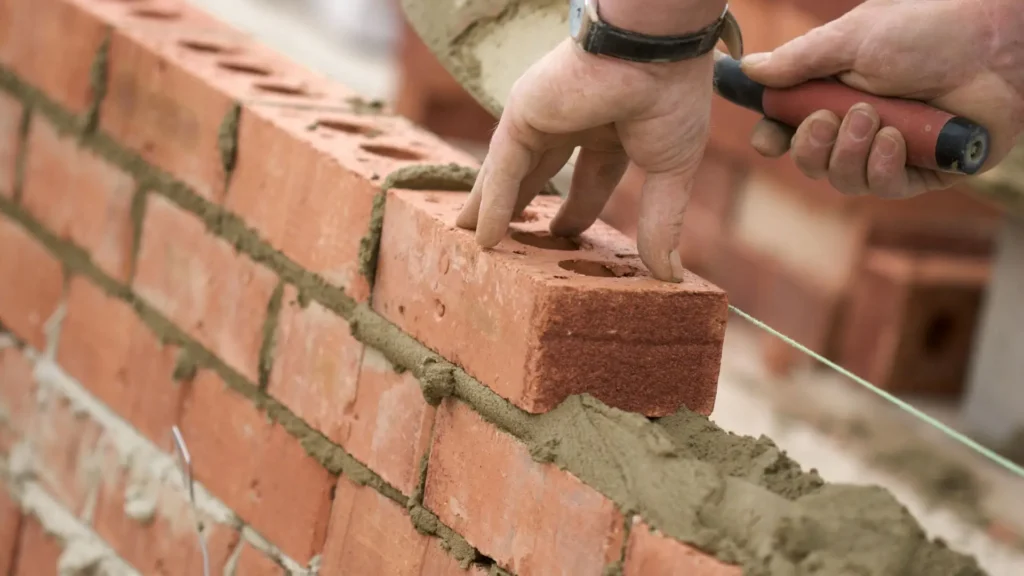
Where To Buy Retaining Wall Materials In Rotorua
When it comes to building a solid and long-lasting retaining wall in Rotorua, choosing the right supplier is just as important as choosing the right materials. Fortunately, Rotorua is home to several well-known and reliable stores where you can source everything you need—from core building blocks to essential drainage supplies. The key is knowing not just where to shop, but also what to look for when selecting your materials.
- Trusted Local Suppliers In Rotorua: Homeowners and contractors alike often turn to reputable stores like Mitre 10 Mega and Bunnings Rotorua for a wide range of retaining wall materials. These big-box retailers offer convenience, competitive pricing, and helpful in-store guidance if you need advice on what to buy. If you’re after more specialised solutions or commercial-grade supplies, Firth is another great option, especially for concrete blocks, ready-mix concrete, and masonry products. Local landscape supply yards and quarries in the Rotorua area also stock bulk gravel, drainage metal, and natural stone, which can be particularly useful if you’re aiming for a more natural or rustic wall design.
- What To Look For In Quality Materials: Not all materials are created equal. When shopping for timber, look for H4 or H5 treated wood—these are designed to withstand ground contact and resist decay, which is crucial in Rotorua’s moisture-rich environment. For concrete products, make sure they meet New Zealand building standards and that the supplier provides detailed product specifications. If you’re using stone, ensure it’s properly graded and suitable for structural use. Drainage components like ag pipes and geotextile fabrics should come from reputable brands to guarantee performance over time.
- Delivery, Bulk Discounts, And Sustainable Options: Many Rotorua suppliers offer delivery services, which can save you significant time and effort—especially if you’re sourcing heavy items like blocks or gravel. It’s worth asking about bulk discounts too; some stores offer lower rates for larger purchases, which is helpful for bigger landscaping projects. If sustainability is a priority for you, look for suppliers that offer recycled aggregates, locally sourced stone, or FSC-certified timber. These eco-friendly options help reduce your environmental impact while still providing durability and strength.
By sourcing your materials locally and knowing what quality indicators to look for, you can set the foundation—literally and figuratively—for a retaining wall that will stand the test of time in Rotorua’s unique conditions.
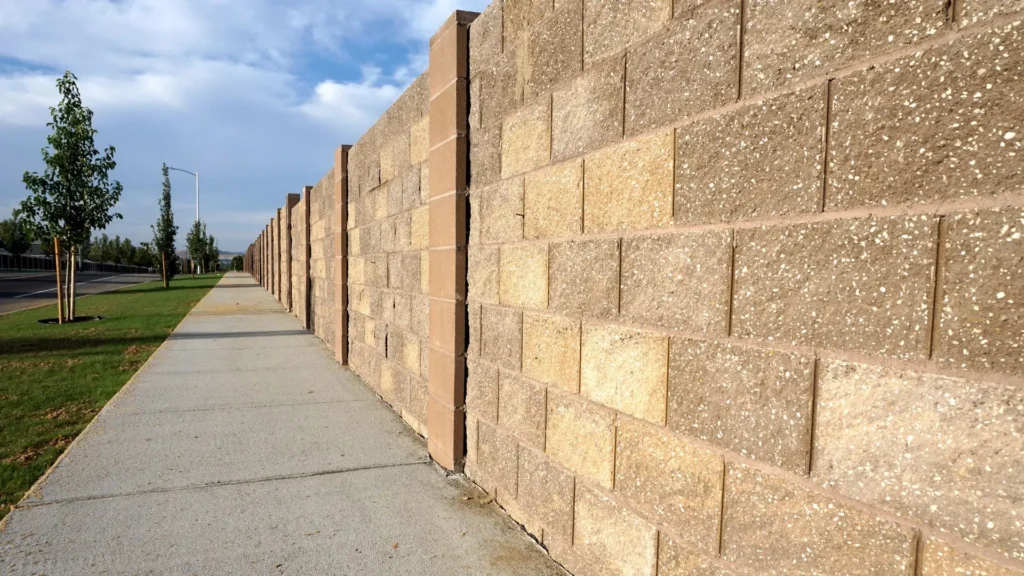
Quick Checklist – Retaining Wall Materials
When planning a retaining wall project in Rotorua, it’s easy to get overwhelmed by the range of materials available. That’s why having a clear, categorized checklist can be a lifesaver. Whether you’re taking the DIY route or hiring a professional, this list will help you stay organized and ensure you don’t miss anything crucial during the build.
This checklist is thoughtfully divided into three main categories: structural, drainage, and finishing materials. Each plays a vital role in the success and durability of your retaining wall, especially in Rotorua’s unique geological conditions, where soil movement and moisture are common challenges.
For convenience, you might want to print this list or save it on your phone or tablet. Having it handy at the local hardware store or during your site prep can help streamline the process and reduce the risk of last-minute runs for forgotten items.
- Structural Materials: These form the backbone of your wall. They need to be sturdy, long-lasting, and suited to the weight and conditions they’ll be supporting.
- Treated timber (H4 or H5 rated for ground contact)
- Concrete blocks or bricks
- Poured concrete mix
- Natural stone (e.g., volcanic rock or schist)
- Gabion baskets and mesh (if applicable)
- Reinforcing steel bars (rebar) or mesh for concrete walls
- Drainage Materials: Drainage is critical to prevent water buildup behind the wall, which can lead to pressure, cracking, or failure.
- Crushed stone or gravel (20 mm is common)
- Perforated drainage pipe (ag pipe)
- Geotextile fabric (for separating soil and gravel)
- Drainage scoria (optional for additional filtration)
- Clean fill sand (for backfill support in some designs)
- Finishing Materials: These improve the wall’s visual appeal and add protective elements that help it withstand Rotorua’s weather.
- Capping stones or timber tops
- Exterior-grade paint or stain (for timber walls)
- Concrete or timber sealant (to prevent moisture penetration)
- Landscaping fabric (for weed control around the wall)
- Decorative gravel or mulch (to finish the surface or surrounding area)
Each of these items plays a role in helping your wall perform as intended—not just functionally, but also visually. Choosing the right materials for Rotorua’s environment is about more than appearance; it’s about building a structure that stands the test of time and nature. With this checklist, you’ll be better equipped to plan, purchase, and build with confidence.
Whether you’re going DIY or working with a pro, using the right materials is key to building a retaining wall that lasts in Rotorua’s unique landscape. If you’re looking for expert advice, trusted suppliers, or need help getting started, visit Retaining Walls Rotorua and let’s bring your project to life, the right way.
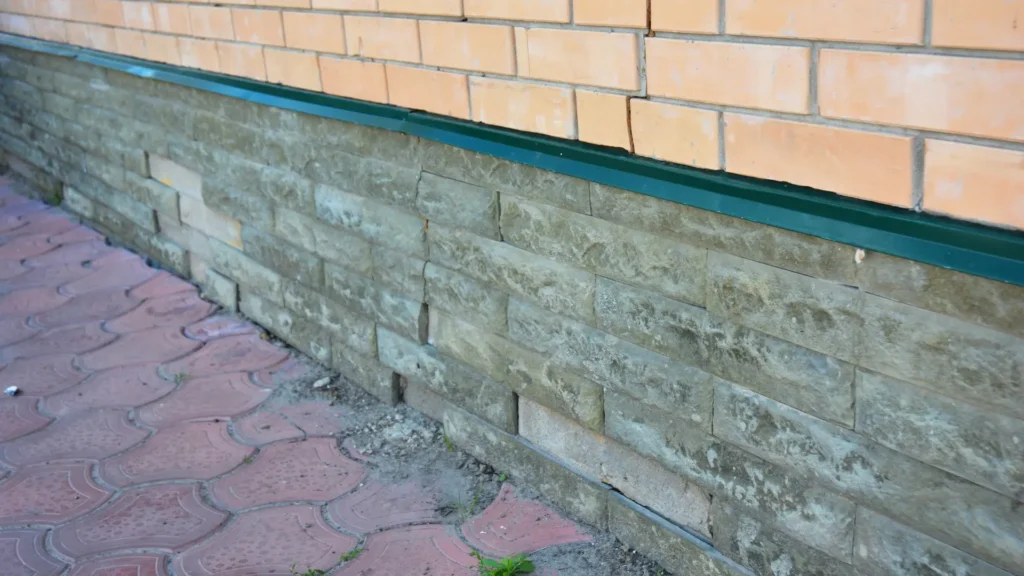
FAQs: About Materials Needed For A Retaining Wall In Rotorua
What are the best materials for building a retaining wall in Rotorua?
The best materials depend on your budget, site conditions, and wall height. Popular options include treated timber, concrete blocks, natural stone, and poured concrete. Each material has pros and cons when it comes to aesthetics, drainage, and structural support, especially in Rotorua’s unique environment.
Why does Rotorua’s soil and climate affect material choice?
Rotorua has volcanic soil, geothermal activity, and a mix of wet and dry seasons. These factors can lead to soil movement and moisture buildup. Choosing materials that offer strong drainage and resistance to erosion—like concrete or stone—helps ensure stability and longevity.
Do I need a drainage system behind my retaining wall?
Yes, drainage is crucial to prevent water pressure buildup behind the wall. Without it, the wall may crack or collapse. A proper drainage system typically includes gravel, perforated ag pipe, and geotextile fabric.
Can I build a retaining wall on my own, or should I hire a professional?
You can build a small retaining wall yourself, especially with timber or modular blocks. However, for taller walls or sloped sections, it’s best to consult a local contractor, especially if council approval or engineering is required.
What is geotextile fabric and why is it important?
Geotextile fabric is a breathable material placed between soil and gravel. It prevents soil from clogging the drainage while allowing water to flow through. This enhances wall stability and improves water management over time.
Do I need council approval to build a retaining wall in Rotorua?
For walls under 1.5 metres high without a load above, you usually don’t need consent. However, if your wall is taller or supports a driveway, fence, or building, you must get approval from the Rotorua Lakes Council. Always check local regulations before starting.
How much gravel or crushed rock is needed for drainage?
Typically, you’ll need at least 150–300 mm (6–12 inches) of gravel behind the wall, extending from the base to the top. The exact amount depends on your wall’s size and site slope. Using too little can lead to poor drainage and early failure.
Can untreated timber be used for a retaining wall?
It’s not recommended. Untreated wood is prone to rot, especially in Rotorua’s moist soil. Always use H4 or H5 treated timber designed for ground contact to ensure longevity and compliance with NZ building standards.
Where can I buy retaining wall materials in Rotorua?
Local options include Bunnings Rotorua, Mitre 10 Mega, Firth, and landscape supply yards. Some timber yards and quarries also offer delivery services and expert advice tailored to local conditions.
What’s the most cost-effective material for a retaining wall?
Treated timber is generally the most budget-friendly option and works well for low to medium-height walls. Concrete blocks offer a good balance of affordability and durability. Stone or poured concrete tends to be more expensive but may be worth it for aesthetics or long-term performance.
Conclusion
Choosing the right materials for your retaining wall in Rotorua is not just a matter of convenience—it’s a critical step that directly affects the durability, safety, and overall success of your project. Rotorua’s unique environmental conditions, such as volcanic soil, geothermal activity, and unpredictable weather patterns, make it essential to carefully consider what materials you use and how they perform under local stressors. Taking the time to plan thoroughly and research each component—from structural blocks or timber to drainage systems and finishing touches—can save you from costly repairs down the line. Whether you’re building a small DIY wall or a large landscaped structure, making informed choices will ensure your wall stands strong and complements your property’s natural surroundings. Take the next step with confidence: consult with local experts or suppliers who understand the Rotorua landscape and can guide you toward the most reliable, cost-effective solutions for your retaining wall project.




